
It has been a busy few months of eMTB news. While we know that the topic can be divisive, controversial, and provocative, the growing prevalence of eMTBs in the United States has challenged land managers, mountain bike organizations, and politicians to find ways to integrate them into land management plans and operations.
Like it or not, it is happening right now, and it would be irresponsible of us to filter the news from readers who might not like it, or to turn a blind eye, as Singletracks has always covered what’s going down on the trails, in terms of access, and letting readers know where they can ride.
Most recently, we talked about the allowance of eMTBs on National Forest land around Lake Tahoe, and of course the recent decision by Secretary of the Interior David Bernhardt to allow all three classes of e-bikes on land that the Interior manages, including National Parks and BLM land.
While we have covered these eMTB access “victories,” or why some people don’t like eMTBs and how they could potentially harm access, and readers have left countless arguments for or against eMTBs, we hadn’t yet spoken with many of the actual trail advocacy organizations who have taken mountain biking so far, and have had their hands deep in paperwork and dirt. Largely, a lot of arguments out there — for or against — are based on assumptions of what trail advocates might say.
In order to cut straight to the chase, we spoke with four trail organizations, two of which represent national interests, while the other two represent local interests, to get varying perspectives.
Dave Wiens, International Mountain Bicycling Association (IMBA)
Most informed mountain bikers should be familiar with IMBA and with Weins. IMBA first rolled out a stance on eMTBs and surveyed members back in 2015, but as Weins also said in our discussion, four years ago qualifies as “eons” in terms of electric mountain biking.
Most recently, they updated their position around eMTBs, which was essentially a reaffirmation after Secretary Bernhardt opened the gates on classes 1-3 on National Parks and BLM land.
From IMBA’s perspective, what seems to be the attitude around eMTBs?
In short, it’s evolving. Generally speaking, mountain bikers are the group that know most about this topic. They know the class system, they know the difference between a pedal assist and a throttle, they understand why these bikes are appealing to a broad group of users.
We’ve been talking about e-mountain bikers as mountain bikers for a number of years, but it’s only in the past two years, and more particularly this summer, become a reality on the trails. You rarely saw an eMTB before that, but now more mountain bikers than ever have at least tried an eMTB and have that perspective to help form their perspectives and opinions. And the topic is getting a lot more attention outside of the mountain bike world.
Has it altered IMBA’s mission in any way?
No, it hasn’t altered our mission at all, but it’s something that we have to take into consideration, because it’s on the landscape. To a casual observer, they look just like a mountain bike. It’s not like it’s this totally different thing that came along, it’s very similar to a mountain bike and they’re designed to be used on the same terrain as a mountain bike. While we’re not advocating for their use, we’re certainly involved in understanding how they fit into the bigger picture of trail access.
Is IMBA communicating with land managers about eMTBs?
We’ve only had a resource area on our website, but IMBA doesn’t do anything specifically, like demo days. Land managers are more in tune with eMTBs, more so those that manage trails. Locally, our BLM has done their due diligence to understand eMTBs and they’ll get several offices together and go ride eMTBs on local trails to understand exactly what it is.
And, what we hear is that riding them is a big step in people’s minds, not necessarily in accepting them, but understanding them, and what the technology is and what it isn’t, particularly class 1.
Is there pressure on IMBA to advocate for eMTB access?
There’s certainly pressure and that pressure can come from a variety of areas. In the extremes, on one end, you’ve got mountain bikers saying ‘we don’t want anything to do with eMTBs,’ and the other saying ‘we want these things to be everywhere, they’re just like a mountain bike,’ and as an advocacy organization, we hear them both.
We’re keenly aware that this category of mountain bikes is not going away. I know that the US is not exactly like Europe, but if we look to Europe for at least an inkling of what may be to come, we’re going to see nothing but growth on the eMTB side.
To better position our organization and to protect access for traditional mountain bikes, we can’t stick our head in the sand that these things don’t exist. When I say “we,” I’m talking about IMBA Local organizations, and basically local mountain bike organizations across the country, mountain bikers, and IMBA. That’s the collective that is already being impacted one way or another by more e-bikes on the landscape.
We hear it frequently from the side that says “e-bikes are not mountain bikes.” Well, there is a pedal-assist element to them, sure. There is a motor. You can point to it. But, other than that, if a group of riders goes by and five are on e-bikes, and five are on regular bikes, they kind of all look the same and they’re going for a ride on the same trails.
If it’s Hartman Rocks here in Gunnison or Cement Creek up in Crested Butte — trail systems that are open to motorized use — then it’s all good. You have a whole bunch of people enjoying mountain biking, some of them just happen to be using a bicycle with a small motor and pedal assist.
Is there pressure from the bike industry to advocate for eMTB access?

No, and the reason for that is that less than ten percent of our annual budget comes from the industry and a very small portion of that comes from brands that are really interested in seeing more acceptance for e-bikes.
Since I came on, and the current team, we’ve had this discussion many times. We have a mission. We’re not an industry trade organization, we’re for mountain bikers, so we need to be unencumbered by pressure and influence from financial supporters. We’re very clear up front that your support for IMBA does not buy a particular decision or direction.
Some of the biggest eMTB brands are also not supportive of IMBA at all. Other brands do have an eMTB interest, but aren’t asking us for anything. We’re 100% not impacted by the industry, which is a great place to be in.
Does there need to be some sort of education on eMTB access or use for eMTBers?
Absolutely, but will it be? How effective can it be? If someone buys or demos a bike, hopefully that retailer educates the buyer on where they can take it and where it’s appropriate to ride, and where they can’t take them. Education is a huge part of it, because they’re not allowed everywhere currently. But it’s a tall order.
Have you seen any instances where eMTBs have threatened traditional MTB access?
We have not, and that’s a big part of our position. We’re supportive of class 1 eMTB access as long as traditional MTB access isn’t threatened. The second part of that is we don’t want to see class 1 eMTBs and mountain bikes become one and the same and there is a movement that wants to see that happen. We feel like that has the potential to be dangerous to traditional mountain bike access, and that’s not the best for growing eMTB access, if they’re combined.
If that happens, we would never get them apart again and if there were access issues for whatever reason, then access for all bikes, class 1 and traditional, would potentially be threatened again.
Ted Stroll, Sustainable Trails Coalition
Ted Stroll is the president of the Sustainable Trails Coalition (STC), a long time mountain biker, attorney, and advocate for allowing bicycles in federally-managed Wilderness. The STC formed in 2015 to advocate specifically for this cause.
What is STC’s stance on eMTBs?
We are pretty agnostic on them. We don’t have any official institutional position of any kind […]. [D]espite all the industry jargon […] [they are] low-powered motor vehicles.
The Wilderness Act forbids the use of any kind of motorized equipment or transportation, and we respect that. Our critics say that we’re working to undermine the Wilderness Act, but we’re working to reaffirm it. Originally, and the way that Congress passed the law, they intended for human powered travel to take place in Wilderness. We’re trying to restore the Wilderness Act to its original intent. Electric bikes are clearly contrary to the Wilderness Act.
How does your membership feel about eMTBs?
What we see on our Facebook page is that members seem to be just as divided on e-bike access as the larger mountain bike community. We have STC supporters who disdain them. We have supporters who think they’re really valuable.
Does e-bike advocacy seem take away from non-electric bike access?

The advent of e-bikes presents another challenge STC’s mission a little more uphill than it would already be. And that is because unsurprisingly, the people that oppose what we’re doing, trying to get human powered travel in Wilderness areas, say that it won’t be possible to keep e-bikes out, and they have a point.
It makes our work a little bit harder, but that’s just the way it is. And, we don’t oppose e-bikes simply because they make our work harder, it’s just another challenge.
At the institutional level, it probably makes our work worse, but in terms of mountain bikers getting kicked off the trails in California, I haven’t seen any evidence.
Actually, on the trails, for all the irritating behaviors that e-bikers can exhibit, in the state of California, I see very little backlash from hikers. The backlash doesn’t seem to have materialized on the trails, people don’t seem to care very much.
What is your outlook on the future of eMTBs?
Before long, they’re going to minimize the batteries so they don’t have that bulbous downtube, and it’s going to be hard for anybody, including the land managers to tell.
And, we live in a society where people will circle around the parking lot to park 50-feet closer to the store. I was in Switzerland 20 years ago, and I couldn’t believe it, I did this rugged 20km hike and there were all these people in their 60s and 70s going up this hill, it was like a traffic jam.
But, the US just isn’t that kind of country. If there’s some labor-saving device out there we seem to gravitate to it real quick, and I think they’re just going to gain in popularity.
Yvonne Kraus, Evergreen Mountain Bike Alliance

Yvonne Kraus is the executive director of EMBA, the nation’s largest statewide mountain bike association, made up of eight different chapters. The introduction of eMTBs has been difficult for Kraus and EMBA to navigate, and while dealing with them seems completely possible and also unavoidable, Kraus believes that it’s going to take time.
What seems to be the attitude towards eMTBs in your area?
We have a good amount of people embracing the technology and are seeing more eMTBs on trails. And there seem to be just as many steadfast opponents who are adamant that a hard line must be drawn at the motor. My inbox has about an equal amount of pro and con emails. Our community remains fairly split in terms of adopting eMTBs on trails, but over the past two years, I have noticed a softening of anti-eMTB comments and support for increased adoption and access [has] become more positive.
Most pro-eMTB arguments I receive focus on the technology offering increased access and diversity to the sport, and the request for Evergreen to advocate for increased eMTB legal trails.
Others argue that mountain bikes belong on non-motorized trails and while Class 1 access would be human-powered, the fact that there’s a motor makes access delineation and enforcement more difficult.
A lot of people are concerned that providing access ultimately leads to increased trail conflict and pressure, which could threaten overall mountain bike access to non-motorized trails if our community chooses not to abide by the rules. With ongoing technology advancements and the battery technology becoming ubiquitous, eMTBs could advance quickly, and to the point where they will be seen as no longer compatible on non-motorized trails.
There’s a good amount of opinion on both sides of the scale. But, interestingly in completing recent panel presentations at conferences, audiences have been more accepting than I anticipated, and the most vocal opposition comes from within the mountain bike community itself.
What is EMBA’s stance towards eMTBs?
We haven’t created a public position statement, and that’s because we are not land managers. Our role is to best advise our land managers on the impact of their decisions to allow e-MTBs on their trails. But we’ve taken a very active advisory role: being part of the legislation process and recommending class 1 access only; only where it makes sense; and only if it does not affect the quality trail experience for other users on multi-use trails, and to plan from a baseline of “closed unless signed open.”
I see our role as a facilitator to help slowly, appropriately, and sustainably introduce this technology. By doing that, we’re not taking a hard stance, but we’re recognizing the fact that the technology is here, and it’s gaining popularity all over the world, and adoption here makes sense. But it cannot be rushed and it cannot be done without industry investment. And in my personal opinion, it shouldn’t be done blanket-style for all eMTBs under existing non-motorized management objectives. Throttles on non-motorized trails are just not okay. Having separate management objectives for eMTBs is key to success. Then, we can work with land managers to introduce them where it makes sense.
Is eMTB advocacy taking away from regular MTB advocacy?
I think there is little awareness of the amount of work it takes to maintain access for traditional mountain biking on trails in certain areas. This technology provides renewed reason for trail user groups to argue that the sport of mountain biking is no longer compatible [on non-motorized trails].
My access conversations are now not only about providing e-bike legal trails, but also include a renewed level of effort for keeping access on existing non-motorized trails and defending our right to be there. That is purely based on a renewed sense of fear, particularly after the recent DOI decision allowing access for all three classes of eMTBs.
So yes, this is taking my time away from doing development on regular mountain bike trails. I now have to do development and advocacy work on e-bike trails and issues, simply because of community pressure, and our Trails Director is spending time calming down or responding to social media comments. This week was all about e-bike comments, pulling together a WA State coalition to respond to the DOI ruling, and restarting a Board special committee on our eMTB response. And no joke, this delayed 8 contracts for new trails and pump tracks that are on my desk awaiting my review and signature.
We don’t get any industry help. Most stores simply ignore the fact that they’re creating a problem and do not educate their customers. Other stores who support EMBA would like to get us more engaged because they’re seeing the market change. And none of the e-bike stores, brands, or manufacturers are offering to help pay for creating access. They may be lobbying at a national level, but they are not stepping up to address the impact of their products on local trail systems.
It’s tough because as the ED of an advocacy organization, without direct industry support, why should I push for e-bike legal trail systems if they aren’t helping to pay for that access? And at the same time, it’s personally emotionally challenging when I have to tell people that they can’t ride their brand new eMTB on a trail they are obviously enjoying.
What is your outlook on eMTB access in the future?
Hopefully over time the technology will be ingrained, and over time sellers and buyers will play by the rules. I do think that eventually things will settle out in a way that’s sustainable, and that for Evergreen, staying relevant for our future members means embracing the technology. But, I think that without industry help, the burden on how to do it right falls on us.
So, can they provide match-grant funding for things like building an e-bike legal trail on public land, which doesn’t take resources away from other trails we’re working on?
E-MTB legal trail introduction on a brand new trail system, where there is no historic use, is a no-brainer. Why wouldn’t you adopt it if it’s brand new trail, and built to today’s wishes and technology? New trails can built specifically for eMTB use: wider uphill turns for example. And if you’re not an e-MTB fan, you don’t have to ride there.
The idea of staying relevant and meeting future user needs is very important to me, for Evergreen’s ongoing appeal and success. I’m trying to hone in on the reasons why exactly advocating for eMTB access is important. Sure, they are a lot of fun to ride and bring more people to the trails, but they are also at the moment spurring controversy and encouraging bad behavior that is not helping our community. I also hear the disability argument a lot, but I personally do not believe it should be used as a reason for access.
E-MTB technology benefits are limited to people with minor disabilities. For the most part, you still need working legs and arms to be able to ride them. The disability argument should include e-assist motors and trail modifications for all adaptive bikes. Evergreen is building an adaptive trail at Duthie MTB park in 2020, with support from King County.
True disability access means investing in wider trails, ensuring wide wheelbase bikes can clear obstacles and grades, and looking at ways the people with all disabilities can access the outdoors through our sport — adaptive bikes with e-assist handcranks for example.
I’m pretty unwavering in my opinion that disability access advocacy and investment for eMTBs only does not service the community we’re trying to reach. That investment must be more broad and encompassing. It’s wonderful that someone with a hurt knee can ride a little longer on an eMTB, or continue to ride with family members, but we can’t draw the line at disabilities at an eMTB, we must consider the full scale of adaptive bike access and investment to make that argument.
Gary Moore – Colorado Mountain Bike Association (COMBA)
Gary Moore is the executive director of COMBA, which is an IMBA Local chapter. While eMTBs are not legal across the board in Colorado, places like Jefferson County, which hold the state’s most-visited trails had a trial period for class 1 eMTBs last year and the bikes became permanently authorized on the county’s busy trails.
Moore’s summarized response to the questions:
Access to natural surface trails for Class 1 eMTBs is still hotly debated in Colorado’s Front Range. We think there’s still much to learn about the introduction of eMTBs to the natural surface trails and we are fortunate to have a front row seat to watch their implementation and to see what, if any, impacts they have both on the trails and their interactions with other trail visitor groups.
Both Colorado State Parks and Jefferson County Open Space, perhaps the busiest trails in the state with nearly 7M visitors annually, allow class 1 eMTBs on their natural surface trails and have for approximately the past year or so. That adds up to the better part of 300 miles of trails in our area and a lot of interactions between eMTB riders and the usual trail visitor groups.
Our members are split on the issue, with about 40% who see eMTBs as an essentially different mode of recreation that should be treated as such, and the rest are either neutral or in favor of welcoming motorized-assist bikes as just another bike in the quiver. To date, we haven’t found any need to advocate specifically for or against eMTBs. Purely anecdotally, eMTBs seem to be blending in well without the need for special considerations and we remain focused on pursuing world-class mountain biking in the Front Range.
Key takeaways

What surprised me the most about talking to each and every organization was how measured and objective they were regarding eMTBs — even Ted Stroll from the Sustainable Trails Coalition, whom I would’ve thought would be the least friendly towards the eMTB conversation. Although they are clearly counterintuitive to the STC’s mission, Stroll wasn’t riled up talking about eMTBs, and couldn’t validate the argument that they would hurt access for traditional eMTBs.
Yvonne Kraus’s statements gave me a lot to think about, however. Based on what she and others had to say, there is something lacking from the brand and retailer side of eMTBs, where they would obviously be financially interested in selling a bike and yet it is not their responsibility to enlighten customers on where eMTBs are actually legal to ride.
The end result is an under-educated rider that isn’t going to let their new several-thousand dollar toy just sit in the garage and collect dust.
Pivot donates a portion of every Shuttle eMTB bike sale to IMBA and has worked with organizations on eMTB education. Although this doesn’t directly increase rider education, or contribute directly to eMTB integration, it is one example of realizing that it’s not productive to introduce this technology onto sales floors and not pitch in anywhere else.
Perhaps the most important piece to chew on though, based on recent events, is that the integration of class 1 eMTBs on non-motorized trails does seem like it will happen regardless. Yes, they have motors. Everyone I spoke with agreed on that, but a class 1 eMTB motor does not equal that of a dirtbike, and it doesn’t have the same impact on trails.
Electric mountain bike technology will continue to improve over time, and the bikes will look more and more like non-motorized mountain bikes. And like Wiens said, eMTBs will be ridden by folks who look like regular mountain bikers.
Eventually, the only distinction to be made will be from core mountain bikers who can recognize the appearance of an eMTB, and assumptions be damned, still don’t want anything to do with them. In the grand scheme of things, that seems to be the least of our problems.








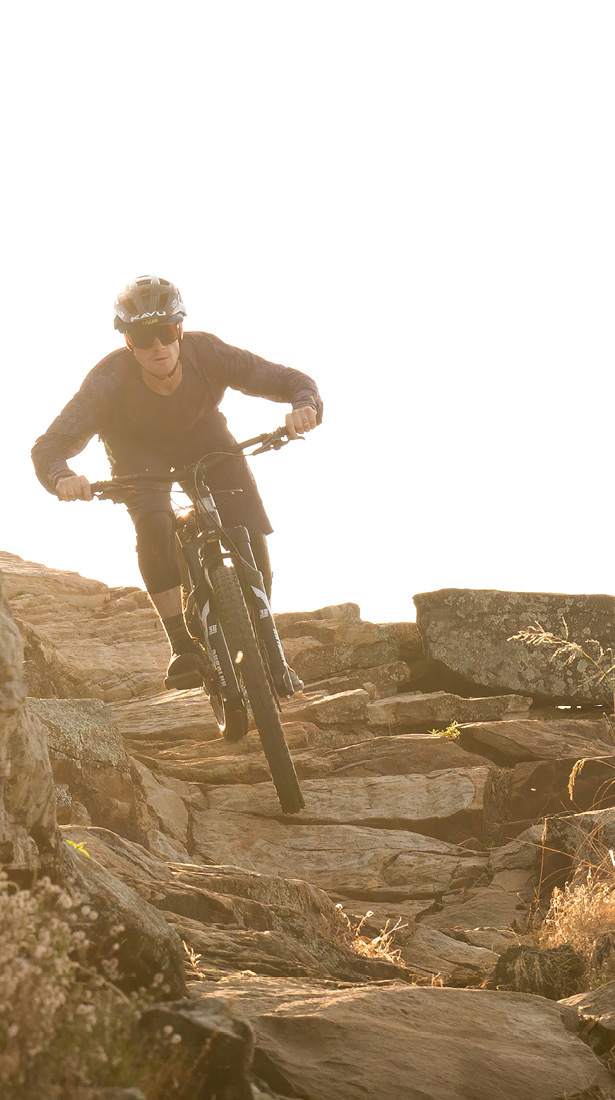

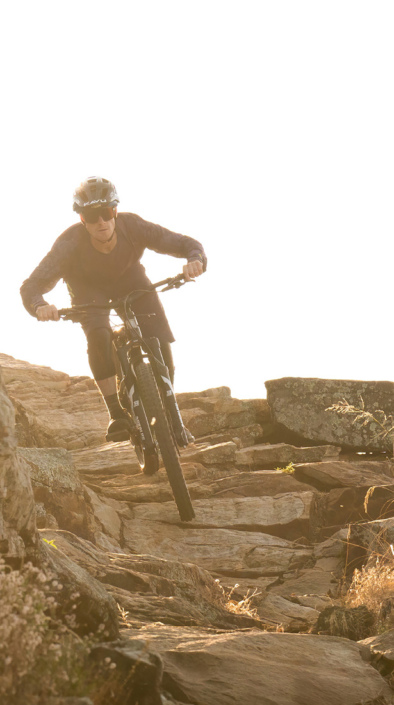




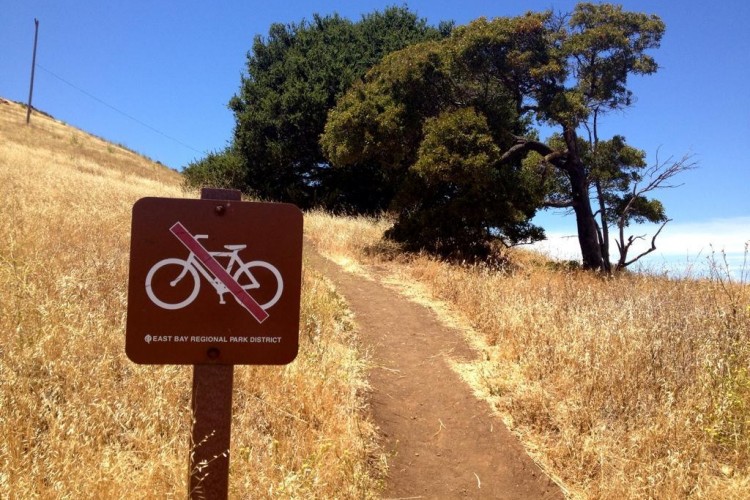
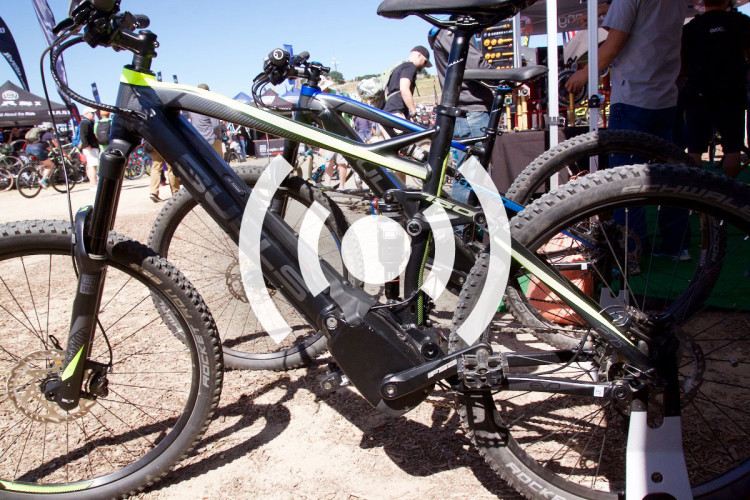

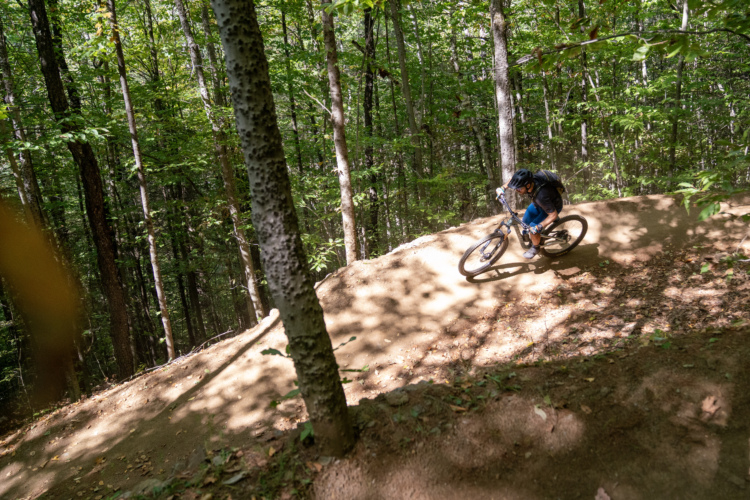
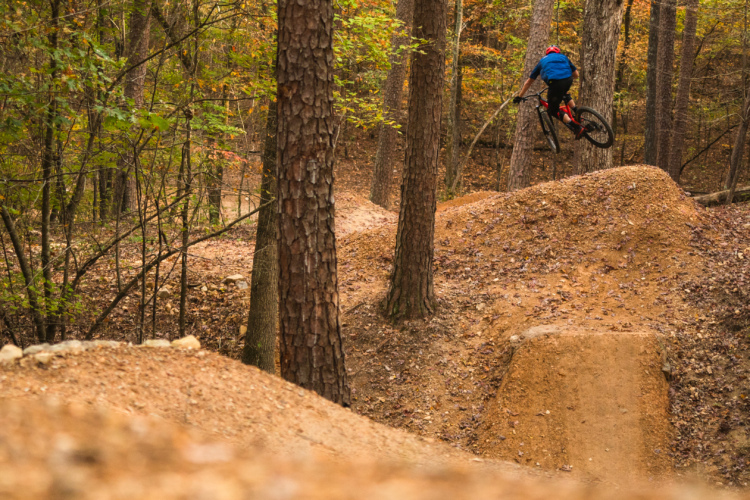
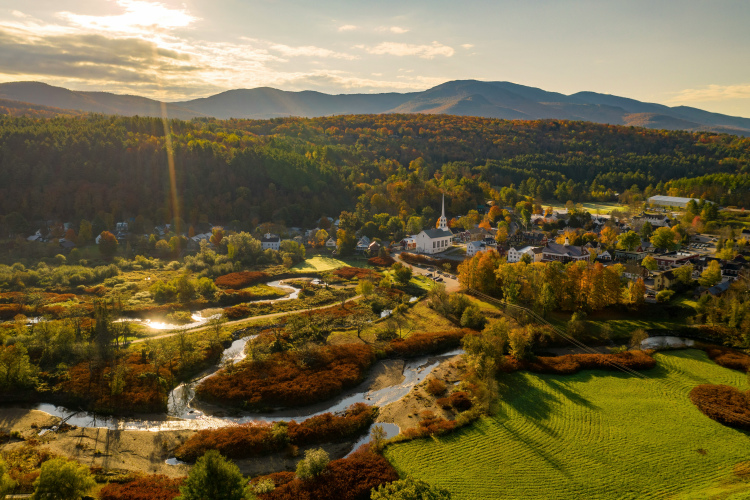
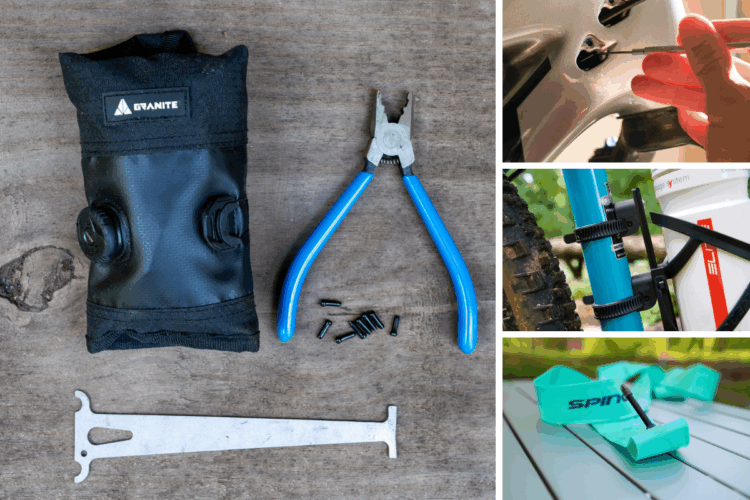

42 Comments
Sep 24, 2019
Sep 26, 2019
The Wilderness Act was passed in 1964, so it's obvious that
he was trying to promote something else.
You need to get your head out of your tail.
Sep 26, 2019
Sep 26, 2019
Sep 25, 2019
Sep 25, 2019
Okay, then LET'S SEE THE STATEMENT from the "signing President." I provided a quote from the actual Wilderness Act that backs up my point of view. Perhaps you need to back up some of your stuff. Either put up or shut up.
Sep 25, 2019
Sep 25, 2019
"there shall be no temporary road, no use of motor vehicles, motorized equipment or motorboats, no landing of aircraft, no other form of mechanical transport, and no structure or installation within any such area."
So, that line bans motor vehicles, motorized equipment, motor boats and motorized aircraft cannot land. All the possible motorized vehicles are covered in the sentence. So, if "mechanical transport" is the same as "motorized transport" then the line "no other form of mechanical transport" would be redundant with the rest of the sentence. It's obvious that the line "no other form of mechanical transport" can mean transport other than motorized transport. The fact that it says "no other form" even emphasizes it covers a wide spectrum.
Jon writes: "The fact is: bicycles were included in the original act." Even Ted Stroll of the Sustainable Trails Coalition disagrees with that. In a Frontlines podcast of October 2017, Ted said "Mountain bikes and bicycles generally never made an appearance in the Wilderness Act, itself."
And I really don't want a local yocal land manager making decisions that Congress used to make. Previously, when there was an exemption in the Wilderness Act for any reason, Congress wrote that into the Bill for the Wilderness Area. For instance, preexisting airstrips were grandfathered in the Bob Marshall River of No Return Wilderness Bill.
So, Jon, you are wrong on all accounts
Sep 25, 2019
Sep 25, 2019
And Yes, STC is on the wrong end of history here. First of all, the only person they could get to sponsor their bill is the most extreme right-wing member of the Senate: Senator Mike Lee. And this time, it seems as though Lee is going it alone because there are no co-sponsors for the Bill in the Senate, yet. And, Congressman Tom McClintock has not yet reintroduced the Bikes in the Wilderness Bill in the House. McClintock usually wins his House Seat by 25%, but this last time in 2018 he only won by 8 points. So, he might be more wary of introducing this ridiculous legislation.
And even Ted Stoll has indicated his bill is doomed. Here is a quote from a December 2015 Podcast: “The way Congress works is if you have the Democrats controlling either house, then inevitable opponents of what we are doing could always find some Senator or member of Congress who will find a way to block the kind of Legislative change we’re seeking, with two Republican houses, that becomes much more difficult” So, even Ted Stroll thinks it will be an uphill battle with the Dems now controlling the House. And let's face it, STC has had two years of having the Congress and Administration completely controlled by the Republicans, AND THEY STILL COULDN'T GET THEIR STUPID BILL PASSED!!!
What this has been is a total waste of the $250,000 that STC has allegedly received. We really don't know exactly how much they have received because they have NEVER published their taxes. Any legitimate organization collecting money by donations would at least publish their taxes.
The Sustainable Trails Coalition and their Bill just stinks to high heaven.
Sep 24, 2019
Reading this helped me come closer to understanding what about this debate got me riled from time to time. I think it's mostly based on two things. The first I won't get into other than to say as a Motorcyclist . . . the whole "it has a motor, therefore it is a motor bike" @%$@#S ME RIGHT THE #%& OFF.
On a more constructive note, the other part that gets me piqued is/are the arguments of trail damage. As pointed out, "No Other Form of Mechanical Transport" taken *strictly* would rule out MTBs. But I'm interested in what about eMTBs are truly objectionable. I'm not approaching this from the "look, it's a MTB with a motor/pedal assist/technology" standpoint. Here's where I'm coming from, and I'm using a dirt bike as a reference:
1) Gasoline fumes pollute the environment. This is very evident.
2) Noise pollution. Also very evident. We're not talking about making it annoying for other people in the woods, we're talking about wildlife.
3) Weight of the bike. This is a big one (no pun intended) because the weight of a dirt bike is a major factor in trail damage. Largely because . . .
4) The power needed to move the vehicle. Torque is required to move a bike, and you need a bunch more to move a 300+lb machine + a rider than a 30lb machine + a rider. This can lead to tire slippage that digs into the ground, etc.
eMTBs don't violate these. For those who want to point at the weight difference between a low-end eMTB and a carbon frame XC . . . I'll just say be careful. That weight difference will be made up depending on the rider. Well, unless the approach is "only people who weigh less than X should be allowed to ride" is to be adopted. And that would be a bad approach to take in my opinion.
The tech is not going away. If eMTBs are truly a problem, I'd like to hear sold reasons why. I'm talking how the machine is an issue . . . not the idiot riding it. For those who point to the bad rider who flies down the trail on her eMTB at 25+MPH, I'll point to the equally bad rider who plows her 29er Aluminum full squish through untamed woods because she doesn't feel like riding through mud that day. Not the bad rider who dangerously passes riders uphill on his eMTB while going super fast; I could point to the normal MTB rider who dangerously passes riders downhill on his hardtail because he doesn't care about putting someone off the trail.
I want to hear why the eMTB is *actually* a problem.
Sorry if I riled feathers this morning.
Sep 24, 2019
Sep 24, 2019
Sep 27, 2019
One possible conclusion: Emerging data does not support a ban or segregation of eMTBs.
According to Wiens: "To a casual observer, they (eMTBs) look just like a mountain bike. It’s not like it’s this totally different thing that came along, it’s very similar to a mountain bike and they’re designed to be used on the same terrain as a mountain bike... if a group of riders goes by and five are on e-bikes, and five are on regular bikes, they kind of all look the same and they’re going for a ride on the same trails." When Wiens was asked "Have you seen any instances where eMTBs have threatened traditional MTB access?", his reply was “We have not…”
According to Ted Stroll: "Actually, on the trails, for all the irritating behaviors that e-bikers can exhibit, in the state of California, I see very little backlash from hikers. The backlash doesn’t seem to have materialized on the trails, people don’t seem to care very much."
Oct 3, 2019
Increased trail usage is increased trail usage and certainly elevates the need for maintaining a trail system. You brought up a number of points in regards to eMTBs, and while I may not agree with some of them, I believe these are valid points of discussion.
On weight, the limit I can see would be GVW for any wheeled item (MTB, eMTB, Dirt Bike, etc.) with additional restrictions based on emissions and noise (would address the dirt bike issue.) a 40lb bike w/o carbon emissions is a 40lb bike w/o carbon emissions . . . regardless of how hard a person has to pedal. Granted, that's my view.
Speed limit - that's a rider issue/concern. Just because a rider *could* bomb a descent at 35mph doesn't mean she *should* do so. I largely put that on the rider rather than restrictions. For example, the singletrack I ride in Maryland isn't Whistler. If I pretend it is and wind up wrapping Marmaduke around a tree, that's my fault, not the bike's manufacturer. #LiesITellMyself
For me the big takeaway is eMTBs only open up the chance for more individuals to enjoy the trails we currently ride without increasing damage to the system more than other MTBs. However more people on the trails certainly increases the wear and tear on the natural areas we frequent. While I may not personally agree with the desire to separate eMTBs and traditional MTBs for legal or advocacy reasons, I feel I have a better understanding where that approach comes from.
Oct 3, 2019
I'm not concerned with eMTBs crowding the trails. My point is that it is undeniable that increased eMTBs will increase trail wear and conflict between trail users. For some trail systems this will not be a problem, but for others it will. Before there can be rules put in place to mitigate these issues it is important to realize that the eMTBs of today will not necessarily be the eMTBs of tomorrow. My concern is that if certain trails are opened up to eMTBs, where does it end. Do we only allow pedal assist bikes, or can they have a twist throttle? Do they need to stay under 20, 30, or 50 mph? Should they be restricted to under 500w or 5kw? What about weight limits? If people are allowed to ride motorized bicycles on all national forest trails, what will be the reason for not letting others ride motorized dirt bikes (electric) on those trails as well.
Oct 1, 2019
You pointed out with the improvements of eMTBs and the cost drop that's expected, trails could become overcrowded.
Would you feel the same if eMTBs didn't exist but the same number of people got traditional MTBs and the trails were just as crowded? I'm looking for the issue here - is it overcrowding that's the concern, or something specific w/ eMTBs?
Sep 27, 2019
Sep 27, 2019
Vehicles and the Wilderness Act specifically bans motorized vehicles. It also bans non-motorized
vehicles to with the phrase "no other form of mechanical transport," but, it an error of strategy,
STC claims that "mechanical transport" means the same thing as "motorized transport." Well, if
the writers of the Wilderness Act wanted it to mean "motorized transport" they could have just
written it that way.
Plus, the title of the article says that Singletracks asked "Four Major Mountain Biking Organizations."
Well, maybe if STC really wants to be viewed as a "Major Organization" they should publish their taxes
for everyone to see. So far they have allegedly collected over $250,000 in donations but have never
published their taxes like any respectable organization would do.
Sep 29, 2019
Oct 2, 2019
Oct 2, 2019
I'm still waiting for you to give us the link to the LBJ speech.
Maybe you should do that instead of continuing to make
nonsensical comments.
Oct 2, 2019
Oct 2, 2019
Some flowery wording in a minor bill does not usurp the Wilderness Act
And you forgot to mention the paragraph where the Rattlesnake National Recreation
and Wilderness Act of 1980 says "the Rattlesnake Wilderness as
designated by this Act shall be administered by the Secretary of
Agriculture, hereafter referred to as the Secretary, in accordance
with the provisions of the Wilderness Act"
In other words, "no other form of mechanical transport" applies.
John seems to be having difficulty getting his head out of his tail.
Oct 1, 2019
There is one paragraph covering each. MTBs appear in the paragraph covering the Wilderness area, not the NRA... and therein it specifically calls bikes a Wilderness one, and primitive recreation.... in the Wilderness portion of the bill.
As usual, Todd the troll seems to be having some difficulty getting out of his mom's basement.
Sep 30, 2019
You should have stopped when you were ahead.
Sep 30, 2019
Sep 30, 2019
And, exactly where did "Congress went so far as to list cycling as primitive recreation, right alongside hiking and horseback riding." I hope you are not referring to the Rattlesnake National Recreation Area and Wilderness Act. Because, obviously, there was a National Recreation Area included with that Act.
Sep 30, 2019
Sep 30, 2019
What part of "no other form of mechanical transport"
don't you understand.
Sep 24, 2019
Sep 25, 2019
Sep 27, 2019
Jun 8, 2020
It is astonishing at how little progress has been made with disability access to public recreation.
I too want to experience wilderness access and if pedal assist helps my arthritic limbs get me there, it seems completely appropriate to me. Animals are not any more affected by my assisted access than they are by the younger stronger riders.
Sep 25, 2019
Sep 25, 2019
Sep 25, 2019
Sep 28, 2019
No group of users has a greater right to use the trails than another group as long as safety and environmental impact are taken into account, in my opinion.
Certainly overuse might be a problem down the road. It might also be a problem without e-bikes depending on the popularity of mountain biking. Personally I do not think this is necessarily a bad thing, because I don't want areas where I can hike or bike turned into housing developments or shopping malls. I have a friend involved in a small trail system and she continually has to prove the worth of that trail system to the city developers, some of whom want to build on it. That worth depends on the number of people using it. Most of the developers don't care a rat's ass about having green areas for their own sake.
In Montana some of the rivers have had conflicts (especially between fishers who float and those who wade) from overcrowding. Currently the state manages that problem on sections of the Big Hole river by limiting the number of days per week outfitters can float different sections, and on the Smith river by issuing floating permits (there is a 65 mile section not accessible other than by floating) to limit the number of floaters. The public seems to accept these restrictions since the quality of experience on the rivers is so much better. If overcrowding occurred in a trail area from overuse similar limits could be used - some trails could be limited to hiking only on even days and biking on odd days, for example, or variations of the above. It doesn't need to be a zero sum game as long as folks are willing to compromise.
My point is that regular bikers do not have a greater right to the use of public areas than other users. If we work together the contentious issues should be able to be sorted out hopefully to mutual satisfaction and benefit.
Sep 24, 2019
If handicapped access to mountain bike trails is what you are now advocating, then that's a different issue.
Sep 24, 2019
Beyond that, I think you have to look at it on a case by case basis based on trail maintenance and use conflicts. I think there needs to be more data, but where a particular use poses no special concerns I think it should be allowed.
Mar 23, 2020
To clarify, I am only in support of class 1 eMTBs on single tracks and national parks. I do not have an opinion on class 2 but I definitely don't believe class 3 should be allowed. I have a regular mountain bike and a class 1 eMTB and class 1 is simply a slightly more advanced take on the traditional mountain bike. Class 1 mountain bikes have a much closer connection to regular mountain bikes than class 2 and class 3.
Jun 8, 2020